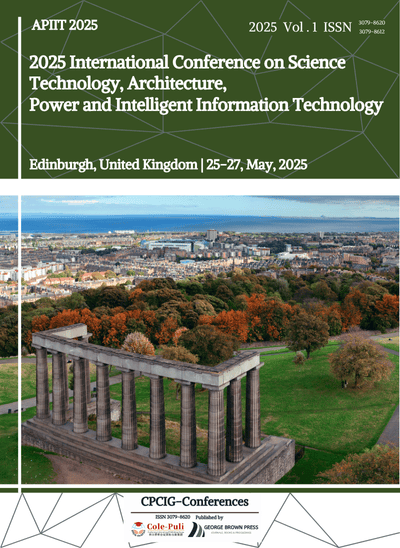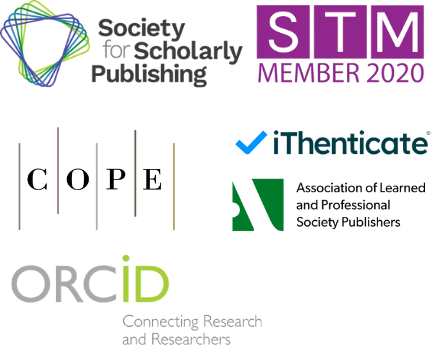Leveraging NLP for Semantic and Numerical Inconsistency Detection in Tax Submissions
DOI:
https://doi.org/10.71222/0fmphc41Keywords:
tax compliance monitoring, deep learning, entity recognition, financial document analysisAbstract
This study presents an innovative method for identifying tax fraud through the application of natural language processing (NLP) to uncover irregularities within tax documents. Departing from conventional approaches that rely primarily on numerical analysis, the proposed framework combines domain-specific BERT embeddings with bidirectional LSTM architectures to effectively capture nuanced contextual information. A hybrid ensemble architecture is developed to process both structured data and free-text components within tax returns, facilitating the identification of semantic associations among financial entities and exposing numerical inconsistencies. The system was evaluated on a dataset comprising 15,000 tax documents, of which 8.5% were identified as fraudulent. The proposed model achieved superior performance, with an F1-score of 0.868 and an AUC of 0.931 — marking a 7.6% enhancement over leading existing models. Detection effectiveness varied by document category: individual income tax filings yielded an F1-score of 0.889, outperforming business-related filings, which scored 0.818. Further examination reveals that semantic features are particularly effective for identifying fraud in corporate tax documents, while numerical coherence indicators are more significant for personal filings. Although the approach requires higher computational resources compared to conventional techniques, its capacity to detect complex fraud schemes — especially those that disguise manipulation within textual content while maintaining plausible numeric data — offers a significant improvement to current tax fraud detection systems.
References
1. L. Yan, S. Zhou, W. Zheng, J. Chen, “Deep Reinforcement Learning-based Resource Adaptive Scheduling for Cloud Video Conferencing Systems,” 2024, doi: 10.53469/wjimt.2024.07(06).19.
2. J. Chen, L. Yan, S. Wang, W. Zheng, “Deep Reinforcement Learning-Based Automatic Test Case Generation for Hardware Verification,” J. Artif. Intell. Gen. Sci., vol. 6, no. 1, pp. 409–429, 2024, doi: 10.60087/jaigs.v6i1.267.
3. L. Yan, Y. Wang, L. Guo, K. Qian, “Enhanced Spatio-Temporal Attention Mechanism for Video Anomaly Event Detection,” 2025, doi: 10.20944/preprints202504.1623.v1.
4. S. Xia, Y. Zhu, S. Zheng, T. Lu, K. Xiong, “A Deep Learning-based Model for P2P Microloan Default Risk Prediction,” Spectrum Res., vol. 4, no. 2, 2024.
5. S. Li, H. Xu, T. Lu, G. Cao, X. Zhang, “Emerging technologies in finance: Revolutionizing investment strategies and tax man-agement in the digital era,” Spectrum Res., vol. 4, no. 2, 2024.
6. Y. Liu, Y. Xu, S. Zhou, “Enhancing User Experience through Machine Learning-Based Personalized Recommendation Systems: Behavior Data-Driven UI Design,” Appl. Comput. Eng., vol. 112, pp. 42–46, 2024, doi: 10.54254/2755-2721/2024.17905.
7. Y. Xu, Y. Liu, J. Wu, X. Zhan, “Privacy by Design in Machine Learning Data Collection: An Experiment on Enhancing User Experience,” Appl. Comput. Eng., vol. 97, pp. 64–68, 2024, doi: 10.54254/2755-2721/97/20241388.
8. X. Xu, Z. Xu, P. Yu, J. Wang, “Enhancing user intent for recommendation systems via large language models,” arXiv preprint arXiv:2501.10871, 2025. doi: 10.48550/arXiv.2501.10871.
9. L. Li, K. Xiong, G. Wang, J. Shi, “AI-Enhanced Security for Large-Scale Kubernetes Clusters: Advanced Defense and Authen-tication for National Cloud Infrastructure,” J. Theory Pract. Eng. Sci., vol. 4, no. 12, pp. 33–47, 2024.
10. P. Yu, Z. Xu, J. Wang, X. Xu, “The application of large language models in recommendation systems,” arXiv preprint arXiv:2501.02178, 2025.
11. J. Yi, Z. Xu, T. Huang, P. Yu, “Challenges and Innovations in LLM-Powered Fake News Detection: A Synthesis of Approaches and Future Directions,” arXiv preprint arXiv:2502.00339, 2025.
12. T. Huang, Z. Xu, P. Yu, J. Yi, X. Xu, “A Hybrid Transformer Model for Fake News Detection: Leveraging Bayesian Optimization and Bidirectional Recurrent Unit,” arXiv preprint arXiv:2502.09097, 2025.
13. J. Wang, X. Xu, P. Yu, Z. Xu, “Hierarchical Multi-Stage BERT Fusion Framework with Dual Attention for Enhanced Cyber-bullying Detection in Social Media,” in Proc. 2024 4th Int. Conf. Artif. Intell., Robot. Commun. (ICAIRC), 2024, pp. 86–89, doi: 10.1109/ICAIRC64177.2024.10900203.
14. T. Huang, J. Yi, P. Yu, X. Xu, “Unmasking Digital Falsehoods: A Comparative Analysis of LLM-Based Misinformation Detec-tion Strategies,” arXiv preprint arXiv:2503.00724, 2025.
15. J. Weng, X. Jiang, “Research on movement fluidity assessment for professional dancers based on artificial intelligence tech-nology,” Artif. Intell. Mach. Learn. Rev., vol. 5, no. 4, pp. 41–54, 2024, doi: 10.69987/AIMLR.2024.50404.
16. C. Jiang, G. Jia, C. Hu, “AI-driven cultural sensitivity analysis for game localization: A case study of player feedback in East Asian markets,” Artif. Intell. Mach. Learn. Rev., vol. 5, no. 4, pp. 26–40, 2024, doi: 10.69987/AIMLR.2024.50403.
17. D. Ma, “AI-driven optimization of intergenerational community services: An empirical analysis of elderly care communities in Los Angeles,” Artif. Intell. Mach. Learn. Rev., vol. 5, no. 4, pp. 10–25, 2024, doi: 10.69987/AIMLR.2024.50402.
18. D. Ma, Z. Ling, “Optimization of Nursing Staff Allocation in Elderly Care Institutions: A Time Series Data Analysis Approach,” Ann. Appl. Sci., vol. 5, no. 1, 2024.
19. S. Zheng, Y. Zhang, Y. Chen, “Leveraging Financial Sentiment Analysis for Detecting Abnormal Stock Market Volatility: An Evidence-Based Approach from Social Media Data,” Acad. Nexus J., vol. 3, no. 3, 2024.
20. C. Zhang, W. Lu, C. Ni, H. Wang, J. Wu, “Enhanced user interaction in operating systems through machine learning language models,” in Proc. Int. Conf. Image, Signal Process. Pattern Recognit. (ISPP), vol. 13180, 2024, pp. 1623–1630, doi: 10.1117/12.3033610.
21. H. Wang, J. Wu, C. Zhang, W. Lu, C. Ni, “Intelligent security detection and defense in operating systems based on deep learning,” Int. J. Comput. Sci. Inf. Technol., vol. 2, no. 1, pp. 359–367, 2024.
22. W. Lu, C. Ni, H. Wang, J. Wu, C. Zhang, “Machine learning-based automatic fault diagnosis method for operating systems,” 2024, doi: 10.53469/wjimt.2024.07(02).12.
23. C. Zhang, W. Lu, J. Wu, C. Ni, H. Wang, “SegNet network architecture for deep learning image segmentation and its integrated applications and prospects,” Acad. J. Sci. Technol., vol. 9, no. 2, pp. 224–229, 2024, doi: 10.54097/rfa5x119.
24. J. Wu, H. Wang, C. Ni, C. Zhang, W. Lu, “Data Pipeline Training: Integrating AutoML to Optimize the Data Flow of Machine Learning Models,” in Proc. 2024 7th Int. Conf. Adv. Algorithms Control Eng. (ICAACE), 2024, pp. 730–734, doi: 10.1109/ICAACE61206.2024.10549260.
25. J. Wu, H. Wang, C. Ni, C. Zhang, W. Lu, “Case Study of Next-Generation Artificial Intelligence in Medical Image Diagnosis Based on Cloud Computing,” J. Theory Pract. Eng. Sci., vol. 4, no. 02, pp. 66–73, 2024.
26. B. Wu, C. Shi, W. Jiang, and K. Qian, "Enterprise Digital Intelligent Remote Control System Based on Industrial Internet of Things," World J. Innov. Manag. Technol., vol. 7, no. 2, 2024, doi: 10.53469/wjimt.2024.07(02).09.
27. C. Fan, Z. Li, W. Ding, H. Zhou, K. Qian, “Integrating artificial intelligence with SLAM technology for robotic navigation and localization in unknown environments,” Appl. Comput. Eng., vol. 77, pp. 245–250, 2024.
Downloads
Published
Issue
Section
License
Copyright (c) 2025 Jiayu Liang, Jiayan Fan, Zhen Feng, Jing Xin (Author)

This work is licensed under a Creative Commons Attribution 4.0 International License.



